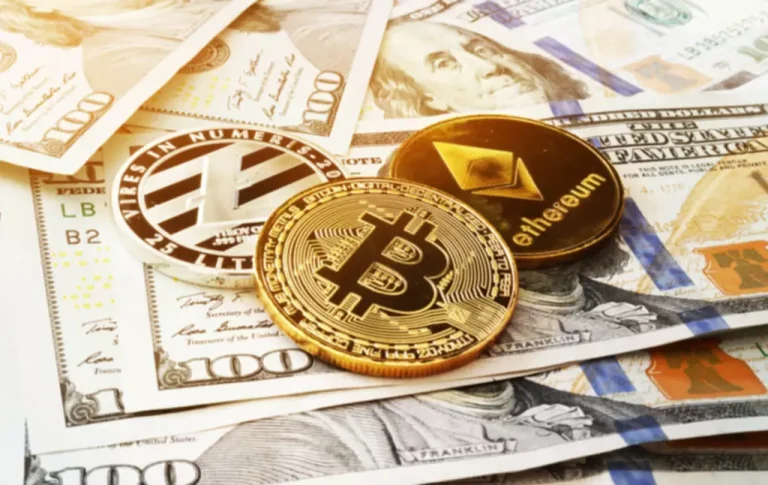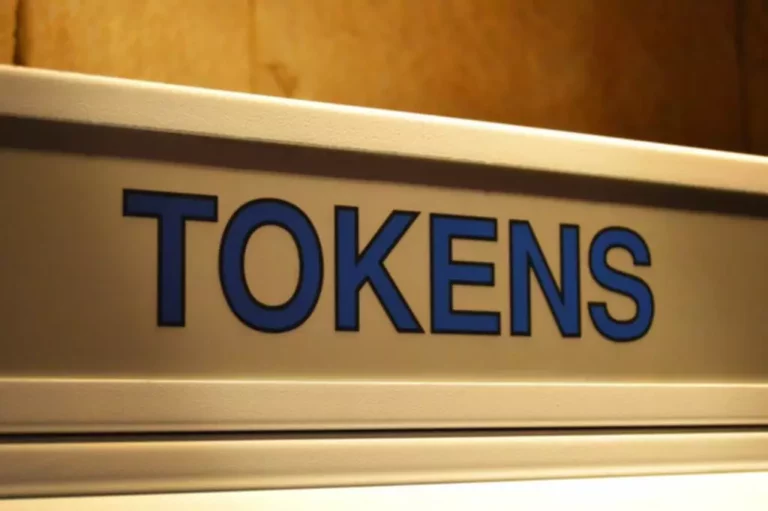Rewards can come in the form of crypto rewards or a fraction of trading fees from exchanges where they pool their assets in. In conclusion, liquidity swimming pools have revolutionized the DeFi landscape, offering a decentralized and efficient resolution to liquidity challenges. Their significance lies in enhancing market stability, facilitating seamless trading, and offering passive revenue opportunities.

A liquidity pool is a mixture (“pool”) of at least two tokens, locked in a wise contract. Layer 2 (L2) is a secondary protocol built on prime of an already present blockchain system. The major aim of such protocols is to boost the transaction speed and overcome scaling difficulties faced by main cryptocurrency networks like Ethereum and Bitcoin. While the principle chain, layer 1, guarantees safety, the 2nd layer provides excessive throughput, so hundreds of transactions can happen. The course of through which users of liquidity swimming pools purchase their crypto pairs is secure in comparability with that of a P2P transaction.
Risks And Concerns In Liquidity Pools
Traders save on exchange fees, and anybody can present liquidity and earn rewards as passive revenue. It’s important to notice that while LP tokens have the potential to earn returns, in addition they expose the holder to sure dangers. The most important of those is impermanent loss, which might occur if the worth of the underlying belongings in the liquidity pool modifications considerably compared to after they had been deposited. These funds are equipped by customers known as cryptocurrency liquidity suppliers, who deposit an equal value of two tokens (or sometimes more) to create a market.

Traders can then buy or promote tokens from these swimming pools, which modifications the stability of tokens within the pool and due to this fact, the worth. Each trade incurs a small charge, which is added to the pool, rewarding liquidity suppliers. In this context, liquidity refers again to the availability of a particular asset within the pool, permitting trades to happen with out important worth slippage. The larger the liquidity pool, the less impression massive trades will have on the asset’s value, contributing to a extra stable and environment friendly market. Liquidity providers acquired a percentage of buying and selling charges in a selected pool.
Liquidity Pools Abstract
Liquidity providers can later redeem their share of the pool by burning their liquidity tokens. If you’ve made it this far, congratulations– you’ve simply discovered about one of the necessary components of decentralized finance. An APR like 110% APR, and even some as high as ninety,000% or higher, isn’t an anomaly amongst different liquidity pools. A centralized exchange like Coinbase or Gemini takes possession of your assets to streamline the trading course of, and they charge a payment for the convenience, usually around 1% to 3.5%. A DEX can be open-source software program created by unbiased builders, which should be audited by third parties to assess its efficacy and legitimacy.
For example, many DEX’s make use of a “constant product formula” to maintain up token worth ratios. This algorithm helps handle the price and ratio of tokens in accordance with demand. Furthermore, if liquidity providers withdraw their deposits after the composition and price of the assets in the pool have changed, they may be left with less worth than they started with. It’s potential pool conditions will change of their favor, and so they can recoup that loss in the future, however after all, there aren’t any ensures. There are calculators that will assist you assess any impermanent loss earlier than withdrawing a deposit, however this is one of the greatest hurdles for liquidity providers.
Blockchain Training
Now, if the value of the mangoes goes up the price of the Apples also goes up. However, as a trader you establish what value you want to exchange your fruits for, and this is where setting a spread comes in. For occasion, you possibly can say that you’ll solely sell your Apples when one apple is price between $1 and $2. If the price liquidity pool meaning goes above or below this vary, you will not take part in the market. Balancer allows for the creation of liquidity pools with up to eight assets with adjustable weights, offering more flexibility than Uniswap. The number of liquidity tokens acquired by a liquidity supplier is proportional to their contribution to the pool.

DeversiFi’s commitment to transparency, privateness, and user-centricity has solidified its position as a go-to platform for traders seeking liquidity and adaptability in the ever-evolving crypto panorama. Curve Finance is a liquidity protocol built on Ethereum that optimizes stablecoin buying and selling. By leveraging automated market makers (AMMs) and low slippage, Curve provides environment friendly and cost-effective swapping of stablecoins with minimal impermanent Loss. Its unique design caters to the wants of DeFi customers, particularly those engaged in yield farming and stablecoin trading strategies. Furthermore, DeFi liquidity pools have facilitated the creation of progressive monetary instruments, such as decentralized exchanges and lending protocols. These protocols rely on the liquidity the swimming pools provide to enable peer-to-peer buying and selling and lending, decreasing reliance on traditional intermediaries and enhancing efficiency.
A liquidity pool is usually created for a particular trading pair (e.g., ETH/DAI or any ERC-20 token pair). Users, often known as liquidity suppliers, deposit their belongings into these pools and in return obtain liquidity tokens, which characterize their share of the whole liquidity pool. Since Automated Market Makers (AMMs) determine costs on liquidity pools, property locked up of their smart contracts are topic to fixed change.
After a certain period of time, LPs are rewarded with a fraction of charges and incentives, equivalent to the amount of liquidity they equipped, referred to as liquidity supplier tokens (LPTs). There has never been a better time for individuals thinking about exploring and collaborating in liquidity swimming pools. Engaging with these decentralized financial instruments allows individuals to tap into diverse funding opportunities, no matter geographical or monetary constraints. By actively collaborating in liquidity provision, users contribute to the DeFi ecosystem’s growth and profit from the potential rewards and returns. Achieving true interoperability calls for standardization and scalable solutions.
Liquidity pool rewards are inclined to decrease as extra liquidity suppliers join, as per simple supply and demand. Remember that the smart contracts written by protocol builders (such as Uniswap) decide how LP staking yields are paid, as a share of fees accrued from the token swapping on the platform. From an investing POV, liquidity suppliers are incomes yields of 100% (and exponentially higher) APR from providing liquidity, which is a comparatively https://www.xcritical.com/ passive however fairly risky apply. If you’re wanting up what a DeFi liquidity pool is, chances are you’re deep in a decentralized finance rabbit hole. Maybe you’ve played with DeFi merchandise like Uniswap and Aave, and maybe even yield farming. LSDFi can be described as a mix of the world of decentralized finance and liquid staking, namely DeFi protocols constructed on high of liquid staking derivatives.
How Do Liquidity Swimming Pools Work?
A liquidity pool is a collection of funds locked in a smart contract on a decentralized finance (DeFi) community. It is a cornerstone of DeFi because it provides a supply of liquidity for customers to exchange and interact with varied digital assets. Liquidity swimming pools are the spine of DeFi (decentralized finance), permitting for decentralized finance buying and selling, DeFi lending, and yield farming. Liquidity swimming pools can also be used for governance, the place customers pool together their funds to vote for a typical cause regarding a protocol’s governance proposals. Another occasion is liquidity mining or yield farming, the place customers present liquidity to a DEX to generate yield as freshly minted tokens.

However, slippage, the difference between the expected and actual execution value, can impression trades on these decentralized exchanges. High slippage arises when liquidity is proscribed, resulting in potential losses or decreased gains for traders. Understanding slippage and actively managing liquidity swimming pools are essential for optimizing buying and selling strategies on constant product platforms. Liquidity swimming pools are a revolutionary idea within the DeFi space, allowing for efficient, decentralized buying and selling whereas offering lucrative incomes opportunities for liquidity suppliers. However, additionally they include their own set of dangers, and potential customers should completely understand these earlier than collaborating.
As the DeFi ecosystem continues to evolve, we’re likely to see more innovation and improvements in liquidity pool technology. Yield Farming Platforms — have emerged as a well-liked trend in DeFi, allowing users to earn passive earnings by lending or offering liquidity to varied protocols. Users can earn curiosity and borrow against their collateral by depositing belongings right into a Compound. The platform makes use of an algorithmic interest rate mannequin, dynamically adjusting rates based mostly on supply and demand. Compound’s success has spurred the growth of numerous yield farming platforms, providing users with further income-generating opportunities. Convexity Protocol is a outstanding liquidity protocol, empowering decentralized finance lovers with environment friendly capital deployment.
Pioneering Blockchain And Defi For World Health And Human Improvement
Bank accounts, loans, insurance coverage, and related monetary products is most likely not accessible for varied causes. It’s necessary to remember that DeFi is just a few years old, and issues break. Once you’ve made your deposit, select the period you want to have it locked up within the pool. A zParachain is an method to bridging the place a dedicated blockchain within the broader Polkadot ecosystem is u… On the opposite hand, illiquidity is similar to having only one cashier with a protracted line of consumers. That would result in slower orders and slower transactions, creating sad clients.
The Means To Examine Liquidity Pool
Secondly, liquidity pools in DeFi platforms have created opportunities for participants to earn passive earnings. By contributing belongings to a liquidity pool, people can obtain a portion of the transaction fees generated by the platform. This incentivizes liquidity provision and fosters a vibrant ecosystem of liquidity suppliers. For developers, liquidity swimming pools provide a approach to create decentralized liquidity, enabling any dApp that requires it.
Uniswap, for instance, is a Brooklyn-based startup with a Series A led by famed enterprise capital firm a16z. In different cases, many DEX upstarts don’t have a centralized company established or an office you’ll find a way to name if issues go awry. It capabilities on an Ethereum network and allows the trading of ERC-20 tokens in a decentralized manner. Volatile modifications can simply have an effect on small asset portions, and lost assets could also be unrecoverable for traders who only lock up a small asset portion to a liquidity pool.